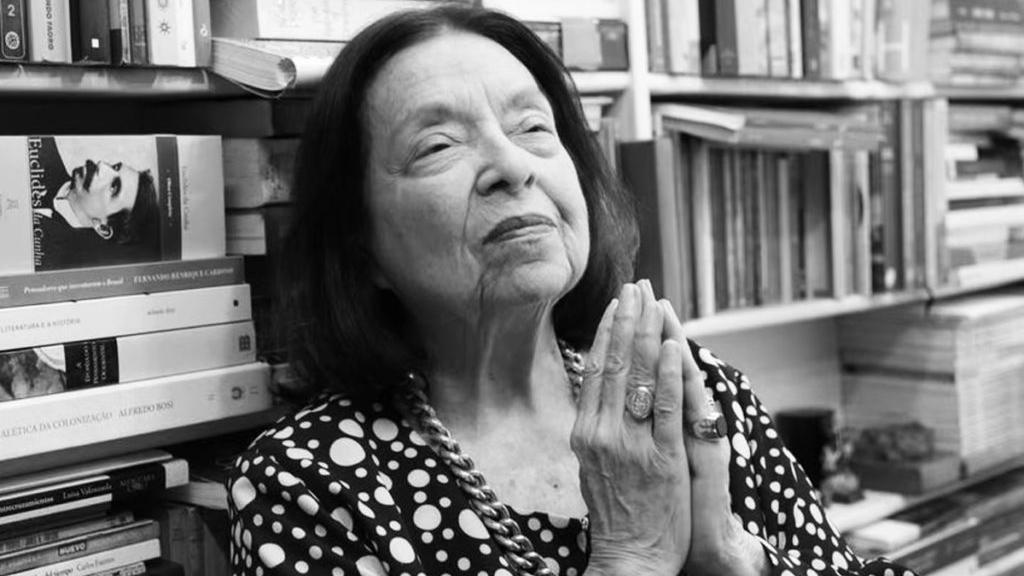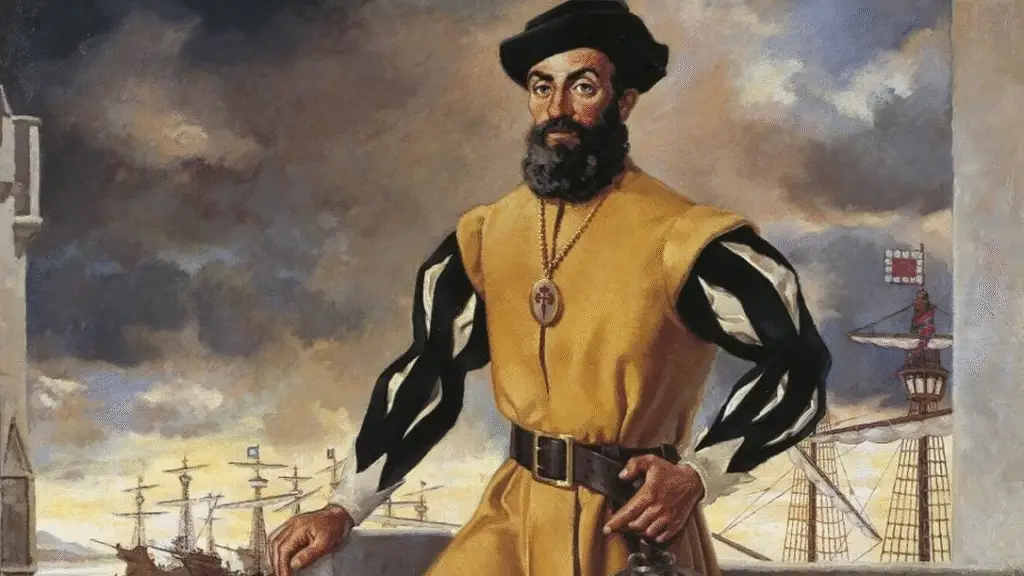
Nélida Piñon (1937-2022)
The literature of Portuguese language, spoken by 250 million people worldwide, is an important cultural heritage of universal value. Of this total, Brazil represents a significant population share (215 million). It is not surprising, therefore, that Brazil’s influence on Lusophone literary production is substantial, standing out through its writers of fiction, non-fiction, prose, and poetry throughout history.
Tiago Barreira
In this sense, contact with Brazilian literature holds great importance as a vehicle for valuing and promoting the Portuguese language internationally, playing a crucial role in fostering interaction between Lusophone countries and the rest of the world.
Furthermore, studying Brazilian literature is also an important means of engaging with Brazilian culture, deepening the understanding of its society and collective imagination. Lastly, contact with Brazilian literature allows for the comparison of similarities and differences with the cultural imagination of other peoples, such as the Galicians in Spain. Brazil is a country marked by its vast ethnic and cultural diversity, and this characteristic can be found in its literature.
To introduce readers unfamiliar with the subject, this article presents a list of essential works and writers for understanding Brazil and immersing oneself in Brazilian culture and society.
It should be noted that the following list is not exhaustive and covers only some of the most significant authors.
Os Sertões (1902) – Euclides da Cunha
The work Os Sertões, written by journalist and engineer Euclides da Cunha (1866–1909), is a landmark in Brazilian literature and historiography. The non-fiction work combines journalistic reporting, historical narrative, and poetic prose.
Portuguese philologist Manuel Rodrigues Lapa considers Os Sertões the Brazilian literary counterpart to The Lusiads, describing it as a “negative epic” of the northeastern backlands people. It recounts the events surrounding the War of Canudos (1896–97), a conflict in Brazil’s hinterlands between the Christian millenarian social movement led by Antônio Conselheiro and the military forces of the newly established Brazilian Republic.
The book offers a profound portrayal of the backlands society and the conflicts that led to the war, revealing the complexity of Brazil’s interior and the tensions between social systems. Written in a descriptive, naturalistic style influenced by early 20th-century positivism, the work is also imbued with great lyrical and poetic richness. It remains a cornerstone of Brazilian literature and essential for understanding the Brazilian people.
Dom Casmurro (1899) – Machado de Assis
The psychological realism novel Dom Casmurro was published by Rio de Janeiro-born writer Machado de Assis (1839–1908). Translated into various languages, it is considered a vital contribution to Brazilian realist prose and one of the greatest works in Portuguese literature.
Published in 1899, the book is written in the first person and set in 19th-century Rio de Janeiro, narrated by protagonist Bentinho, who recounts his life story, centered around his relationship with Capitu. The novel explores themes such as jealousy, betrayal, and fragmented memories, especially regarding Bentinho’s suspicion of Capitu’s adultery. Bentinho’s ambiguous narrative invites multiple interpretations of the described events.
The significance of Dom Casmurro extends beyond Brazilian literature, addressing timeless themes with insightful analyses of human psychology and societal norms. It is an essential study of human society and psychology.
Triste Fim de Policarpo Quaresma (1915) – Lima Barreto
Lima Barreto (1881–1922) was one of the forerunners of modern Brazilian literature. Defined by the author himself as “militant,” his work is largely devoted to investigating social inequalities and human hypocrisy and falsehood. His writings often employ irony, humor, and sarcasm.
Triste Fim de Policarpo Quaresma is the author’s most celebrated work. It stands out for its quixotic character Policarpo Quaresma, an idealist driven by nationalist and positivist ideals of progress and science, who confronts the harsh reality of Brazil’s republican social order in the late 19th century.
The novel critiques the disillusionment of the republican dream in the face of the pettiness and corruption of Brazil’s political class and social elites in the years following the Republic’s proclamation.
According to critic Osman Lins, Policarpo Quaresma is a novel about “the mismatch between imagination and reality, between idealization and truth, between the protagonist’s idea of his country and what his country truly is.” The work also satirizes society’s obsession with titles, political institutions, and the inefficiency of its bureaucracy.
Itinerário de Pasárgada (1954) – Manuel Bandeira
Born in Recife, poet Manuel Bandeira (1886–1968) was a key figure in Brazilian modernism and is considered by some literary critics, such as Otto Maria Carpeaux, the greatest Brazilian poet.
His melancholic lyrical poetry addresses themes such as existential anguish, death, memory, eroticism, the poetry of simple things, and life’s fragility. His ability to address universal themes with simplicity and depth is one of the hallmarks of his work. Both lyrical and innovative, his output remains crucial in Brazilian literary history.
Itinerário de Pasárgada (1954) is an important autobiographical account of his literary and humanistic formation. In this prose memoir, the author narrates his intimate relationship with poetry, recalling his childhood in Recife, school years in Rio de Janeiro, time in Switzerland, and friendships with modernist writers. The book reflects on poetic creation and literature’s role while comparing his work with other writers and artists across different art forms.
A República dos Sonhos (1984) – Nélida Piñon
Brazilian writer of Galician descent, Nélida Piñon (1937–2022) produced an extensive and award-winning body of work. Considered an essential novel in Brazilian literature, A República dos Sonhos explores the immigrant perspective, making it especially relevant to the Galician community. It narrates the saga of a family of Galician immigrants in Rio de Janeiro. Spanning over 700 pages, the novel covers Brazil’s 20th-century historical and social transformations through a personal and familial lens.
The strong feminine presence in Nélida’s books reflects her pioneering role in literature, as she was the first woman to become a member of the Brazilian Academy of Letters.
References:
- Carpeaux, Otto Maria (1951) “Pequena Bibliografia Crítica da Literatura Brasileira.” Ministério da Educação e Saúde.
- Enciclopédia Itaú Cultural. Available at: http://enciclopedia.itaucultural.org.br (Accessed: 2024)
- Lapa, Rodrigues. (1979) “Antonio Sergio e o problema da língua literaria.” Estudos Galegos Portugueses. Lisbon: Sá da Costa Editora.
Originally published on the Portal Galego da Língua.
The opinions expressed in this article are the sole responsibility of the author and do not necessarily reflect the institutional views of Ágora Perene.
Tiago Barreira is a PhD candidate in Philosophy at the University of Santiago de Compostela (USC), holds a postgraduate degree in Philosophy from the Faculty of São Bento-RJ, and a bachelor's degree in Economics from Fundação Getulio Vargas Rio (FGV-Rio). He works as a consultant and data analyst, and regularly writes about topics related to Economics, Philosophy, and Culture.
- Tiago Barreirahttps://agorap.org/en/membros/tiagoc-barreira/






